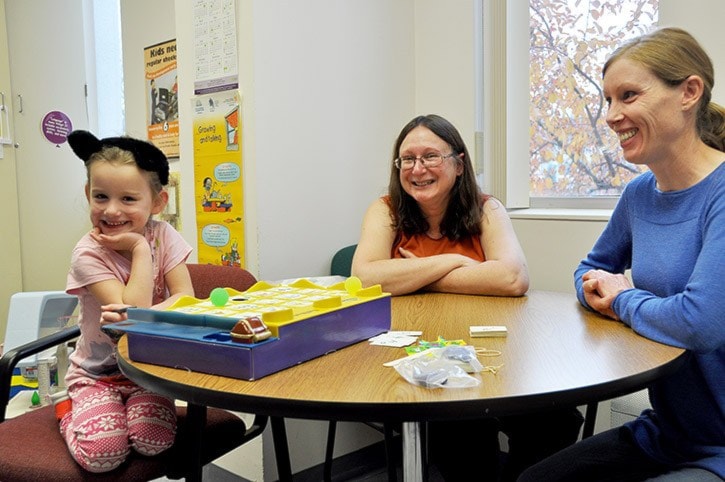Natalie Seifert, who is nearly five years old, loves sparkly dresses, gymnastics, swimming, girly things, going to preschool and getting silly and giggly when playing with her little brother.
When it comes to conscious intellectual activity, she is like any other four year old. She faces a challenge, however: one that occurs in one or two children out of a thousand.
Natalie has childhood apraxia of speech (CAS), which is a motor speech disorder that causes children to have great difficulty planning and producing movements of the tongue, lips, jaw and palate needed for intelligible speech. She knows what she wants to say, but her brain has difficulty coordinating the muscle movements needed to say those words.
Her mom, Robyn Chambers, started wondering if something was wrong when Natalie was six months old. “We had a baby book about development patterns – about making new sounds,” she explained. “Natalie wasn’t making any new sounds and that got me thinking; I said I’d give her another six months to see if anything changed.”
At a one-year-old checkup it was noted that Natalie’s speech wasn’t progressing, and her mother asked to have her looked at and was referred to Interior Health speech and language therapist Alys Wardlaw, and has been seeing her ever since.
“Natalie had issues coping with speech, gestures and eye contact,” Chambers continued. “Alys and I worked on things like eye contact, getting Natalie to communicate in other ways, such as nodding and waving.”
Natalie was tested for autism; when she was nearly three it was determined that she didn’t have autism, but had apraxia.
Chambers said once there was a diagnosis, it was good to have a name and information about apraxia, as well as a lot of support, including support groups with other parents.
“When Natalie was three years old she finally started saying ‘Mama’ and ‘Dada’, and once she became verbal, things changed and we implemented a new program.
“We started working with sounds: melding and fine-tuning them and building a vocabulary from there,” she said, noting that in January this year they started using Kaufmann Speech to Language Protocol.
“Natalie enjoys the successes and is always willing to try. This is a constant focus at home — it’s there all the time.”
Chambers added that when you’re four or five years old, other kids start to notice that you sound different. “With apraxia it’s hard because you can’t always tell what they’re saying and you can’t always tell what they mean.
“It’s a challenge to remember that she isn’t just defined by apraxia; there’s also the challenge, as a parent, of feeling that you’re doing enough,” she explained.
“She’s going to ‘big kid school’ next year, and for me, I’m not sure what that’s going to look like. She’ll need speech therapy at school; she’ll probably need support with reading and maybe with writing.
“The challenges will be different in the school world, as far as my involvement. I’ll work with teachers, administration, support staff and speech therapists.”
Wardlaw said that the Ladies of the Royal Purple have been a truly wonderful support for Natalie and other children, generously funding an iPad and a computer program for the speech and language programs used for Natalie. “They have also funded cards to use with children with apraxia, and have made other donations: we’re thankful for them all,” she added.
In her 25 years in speech and language, Wardlaw has worked with other children with apraxia.
“Speech and language therapy is crucial for their progress; they need lots of practice and drill to get the programming from the brain to the mouth. Having parents on board makes all the difference in the world,” she explained.
“Robyn is a dream mom to work with. She does a lot of things outside of these sessions and is able to incorporate the main things we’re working on here, into everyday activities.”
She also said Robyn was on the ball. “She got Natalie in at a young age so we were able to get a baseline, work on social communication strategies and lay the groundwork for communication with things like eye contact, pointing, joint referencing and copying actions and sounds.
“Once Natalie started signing, and vocalizing along with it, her progress has been beautiful. She went from signing, to vocalizing, to single words, adding consonants and phrases and is now using short sentences,” Wardlaw continued.
“It is beautiful to see her blossom, and to see her talking in preschool and beginning peer-to-peer interactions is so rewarding,” she said.
“Everyone wants their child to have a friend, and this therapy has opened that door for Natalie.”
